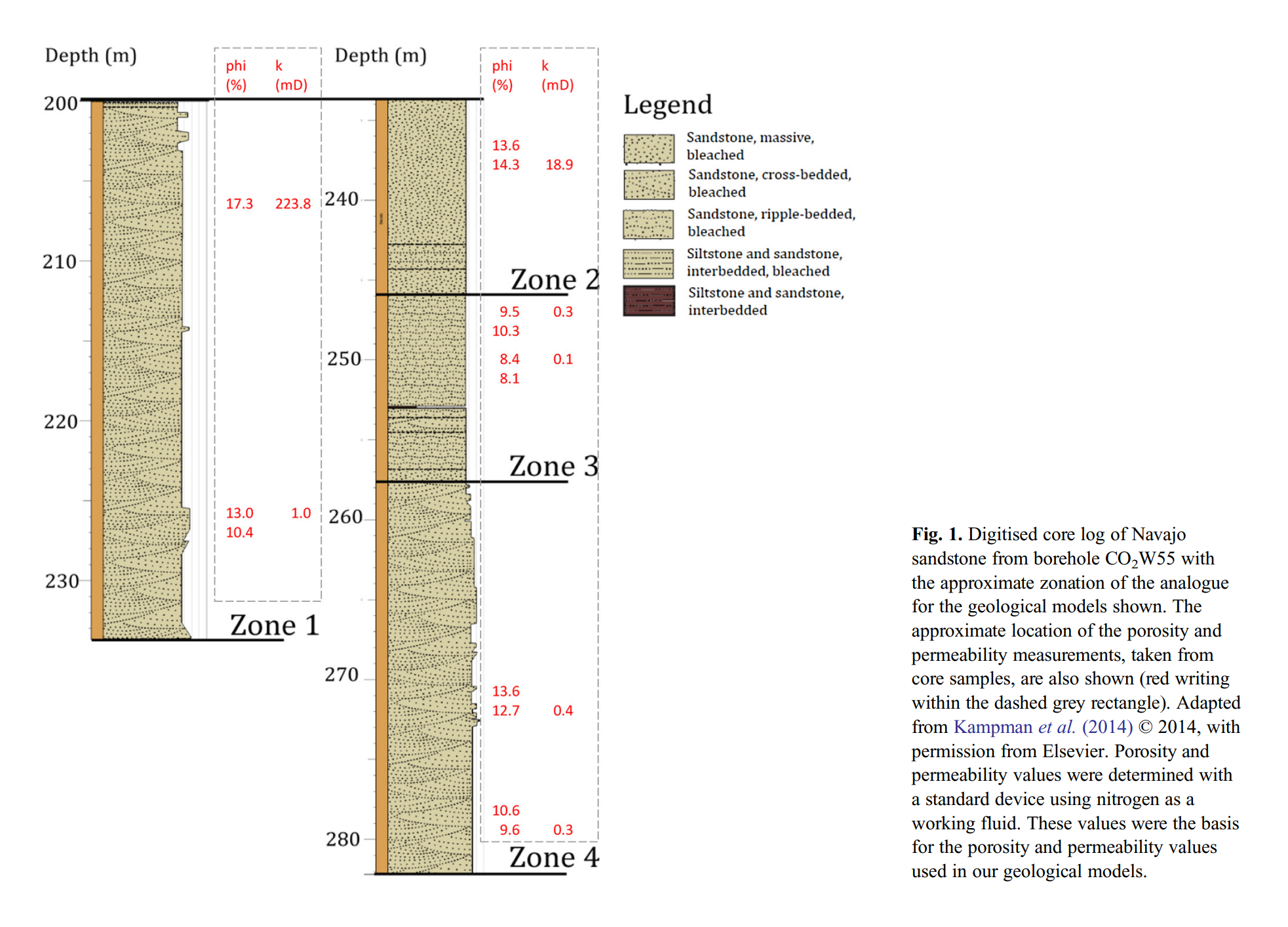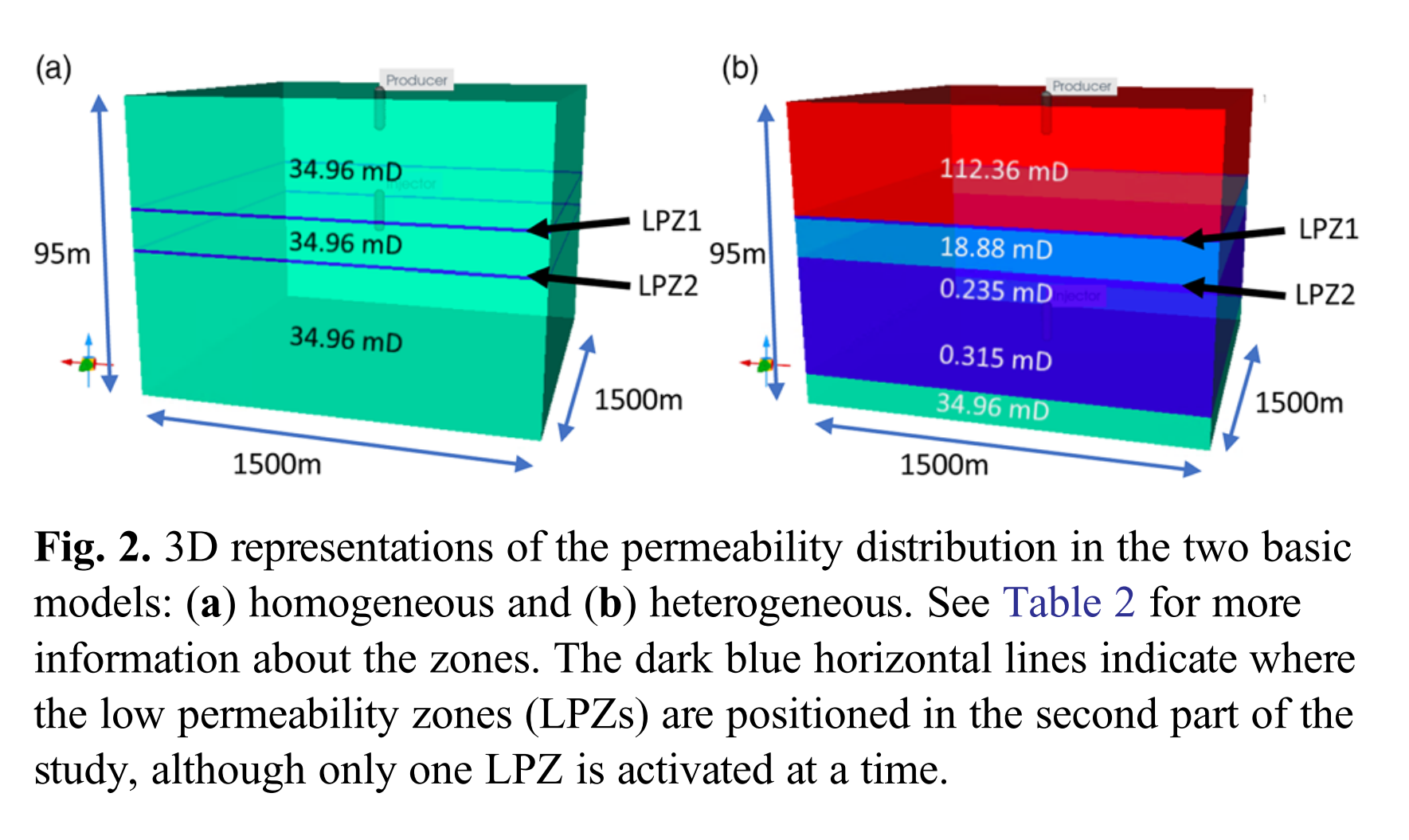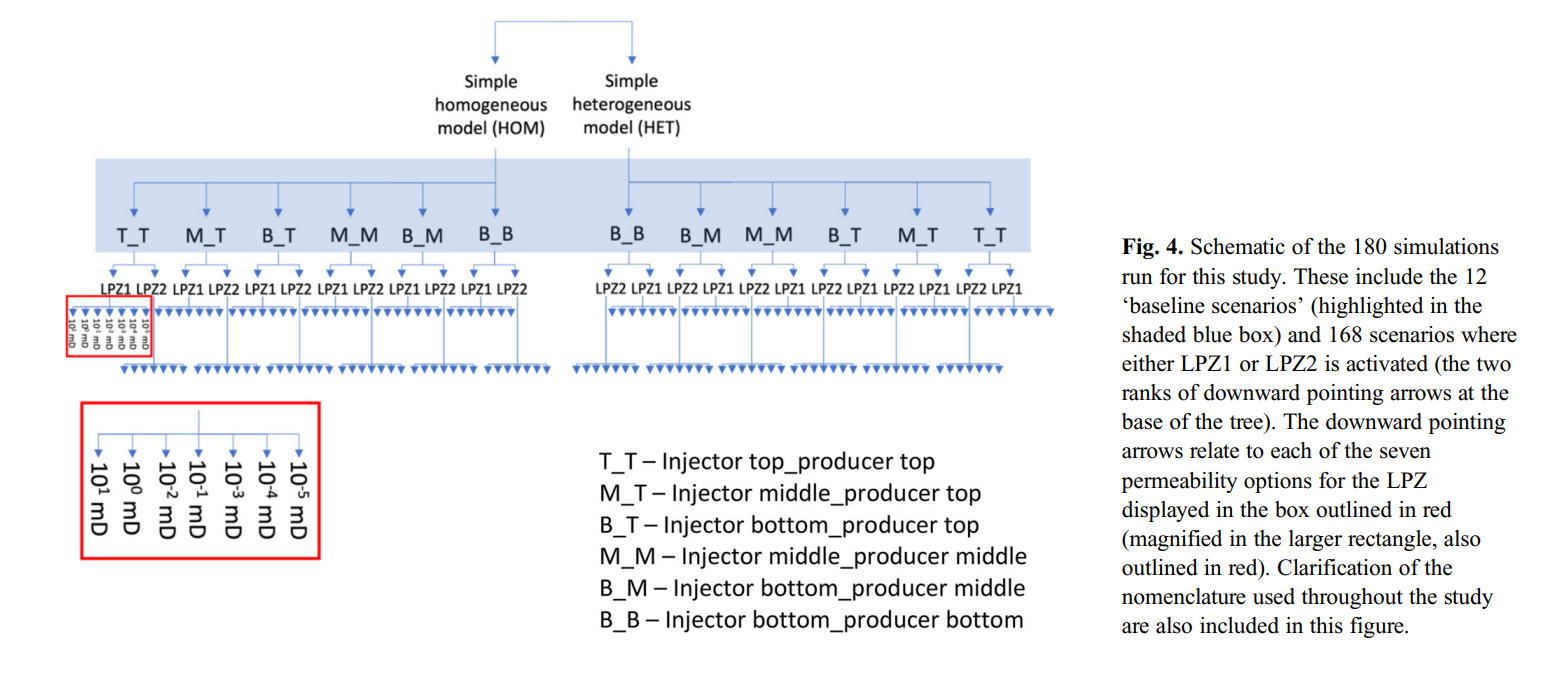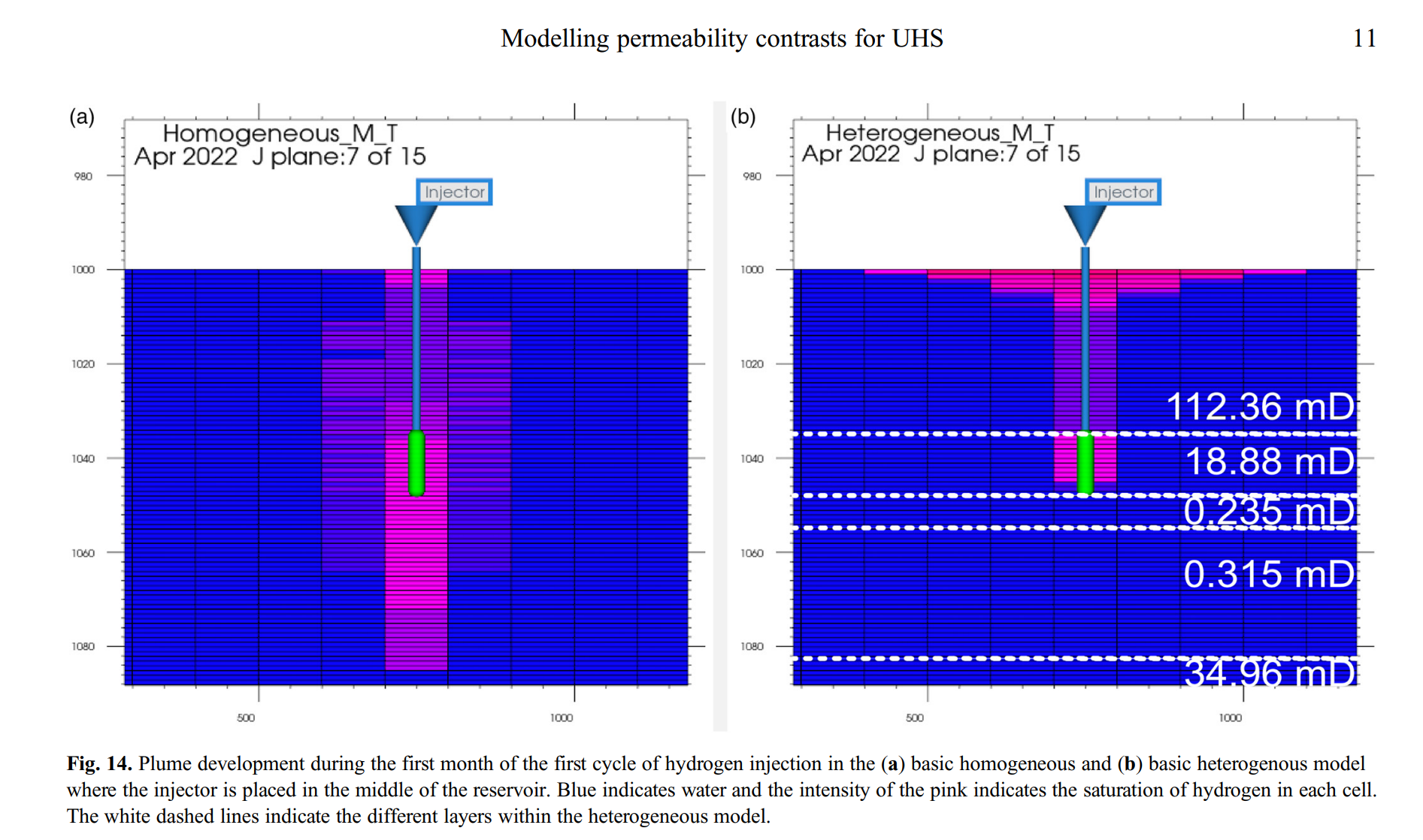Numerical modelling of the effects of permeability contrasts on underground hydrogen storage in sandstone reservoirs
氢气作为一种能源载体,可以平衡因可再生能源供应的季节性变化而产生的能源需求差异。在多孔储层(如枯竭的砂岩气藏或含水层)中储存氢气,能够满足大规模、长期能源平衡的需求。本文介绍了在模型储层设置中氢气的基本行为,该设置涉及两相(H₂和水)系统以及位于储层不同深度的两个井(注入井和生产井)。特别关注天然非均质性及其相关的渗透率差异对氢气注入和生产效率的影响。
研究发现,将注入井和生产井都置于储层顶部,有利于提高氢气产量。此外,渗透率相差三到四个数量级会显著影响氢气流动,但影响压力梯度的因素也需要考虑,这些因素包括储层的隔室化、共存流体的行为以及氢气羽流造成的局部压力梯度。研究强调了了解整个储层构造的必要性,从地震到亚地震尺度,而不仅仅是井周围区域和两者之间的路径,因为这控制存储容量、压力波动并影响操作管理决策。
CMG软件应用情况:
- 软件使用目的:在本文中,CMG(Computer Modeling Group)软件的GEM模块被用于模拟砂岩储层中氢气的地下储存过程,以研究渗透率差异对氢气注入和生产的影响。
- 模型构建:利用CMG软件构建了包含不同渗透率级差的地质模型,包括基础的均质和非均质模型,以及在基础模型上增加低渗透率带(LPZ)的复杂模型。
- 流体流动模拟:使用GEM软件运行流体流动模拟,模拟了氢气和水的两相流动,考虑了相对渗透率、压力、饱和度等因素对氢气储存过程的影响。
- 状态方程:采用Peng-Robinson状态方程来计算流体之间的关系,确保模拟的准确性和可靠性。
结论:
- 井位影响:由于氢气的浮力作用,将注入井和生产井都置于储层顶部可以提高氢气产量。生产井的位置比注入井的位置对累积气体产量的影响更大。
- 渗透率影响:渗透率低于10⁻² mD时会干扰氢气流动,而低于10⁻⁴ mD时则会形成近似无流动的屏障。渗透率相差三到四个数量级会显著影响流动,但压力梯度因素也不容忽视。
- 隔室化影响:低渗透率层和特征可能导致隔室化,影响储层的有效性和氢气的可用性及压力。
- 压力和滞后效应:压力梯度控制着流体流动,而隔室化、其他流体的流动以及滞后效应等因素也影响着储层中气体的行为。
- 储层管理:理解整个储层结构对于有效管理地下氢储存至关重要,包括井位选择、控制注入和生产速度或关井时间等操作策略,可以缓解渗透率差异带来的问题。







Abstract
Hydrogen is an energy carrier that can balance the divergent variations in seasonal energy demand and energy supply from renewables. Underground hydrogen storage in porous formations, such as depleted gas sandstone reservoirs or saline aquifers, provides the capacities needed for large-scale, long-duration energy balancing. This paper reports on the fundamental behaviour of hydrogen in a model reservoir setup, involving a two-phase (H2, water) system and a two well (injector, producer) setup placed at different depths in the reservoir. We specifically focus on the impact of natural heterogeneities, and associated permeability contrasts, on flow and efficacy of hydrogen injection and production. We found that positioning the wells, both injector and producer, at the top of the reservoir facilitates the highest hydrogen production. We also found that permeability contrasts of three to four orders of magnitude significantly affect hydrogen flow; however, factors affecting the pressure gradient also need to be considered. These factors include compartmentalization, the behaviour of co-existing fluids and the localized pressure gradient created by the hydrogen plume. Our research underlines the need to understand the architecture of the whole reservoir, from seismic to sub-seismic scales, not just the zones surrounding the wells and pathways in-between, as this controls capacity, pressure fluctuations and informs operational management decisions.
作者单位:
- 英国爱丁堡赫瑞瓦特大学莱尔中心,英国地质调查局。
